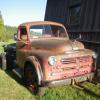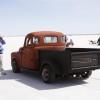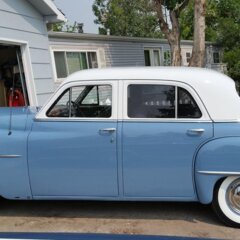
Tony_Urwin
Members-
Posts
494 -
Joined
-
Last visited
-
Days Won
2
Tony_Urwin last won the day on December 16 2024
Tony_Urwin had the most liked content!
Reputation
28 ExcellentProfile Information
-
Gender
Male
-
Location
Ohio
-
My Project Cars
1948 Dodge B1C, 1952 DeSoto wagon
Converted
-
Location
Cincinnati, OH
-
Interests
Old Mopars, music, books , movies
Contact Methods
-
Occupation
Biiomedical Equipment Tech
-
Tony_Urwin started following Who has used 1992 Toyota Celica master cylinder? , GM 525 Steering Gear Adapter Plate , Loose steering and 3 others
-
This is not my truck, I don't know the owner. I just know that he will sell the truck for $900. No motor or trans. The pictures look like the entire truck has been sandblasted. https://www.facebook.com/marketplace/item/552349474473905/?referralSurface=messenger_lightspeed_banner&referralCode=messenger_banner I considered buying it myself, but I don't have the space for it.
- 1 reply
-
- 1
-

-
Thanks, Los Control. I can definitely use those measurements as a starting point for my B1C extensions. My bedsides and fiberglass fenders are not drilled yet. It will be nice to have all the puzzle pieces before I start drilling holes.
-
Thanks for the info, Los. The panels look easy enough to fabricate. I'm waiting for Spring to finish painting my bed. If you would be so kind as to trace a rear panel for me I would certainly appreciate it! The front ones are probably just like yours, only longer for the 90" bed (3/4 ton, 116" wheelbase). The rear panel seems to be several inches short on the 3/4 ton lowsides, so I think they used the same part for the 116" wheelbase as they did on the 108". The front panel would have to be different, since there is about an extra 5-6" between the fender and cab on the 116" truck. The lowside bed story as I understand it goes something like this: The 1939-47 trucks only came in lowside. Then in 1948, Dodge advertised their Improved, Higher Side bed and lowsides were not offered. Dodge found that there was some demand for the lowside bed and offered them as an option again in 1950-51, at no extra cost. I'm not sure how long they remained an option. Don't forget that Power Wagons had high and low side beds, too. So, the 90" lowside bed I bought for my 1948 B1C is not historically correct, but I may go the rest of my life without running into anyone who notices it. My truck started out as a stake bed BTW, which means I also have bigger rear leaf springs, as well. Putting together an old Mopar truck can be so complicated!
-
I bought a lowside bed for my 1948 B1C 3/4 ton, but I'm missing all four of the lower bed aprons. Like you, Los Control, I was thinking about fabricating the aprons if I don't find some. Were the rear aprons the same for the 1/2 ton and the 3/4 ton trucks? I'm pretty sure the front ones were longer, but I'm not sure if maybe the rear aprons were the same?
-
Thanks, Oil Soup! They don't list 1948-53 Pilothouse trucks for some reason (1939-47 and 54-56 are listed), but it looks correct to me. I placed an order for a dozen.
-
I bought the front tracks for one piece windows from DCM Classics, along with new longer rubber window channels and their aftermarket armrests. The metal tracks came with 3 screws and the doors are already drilled for mounting either vented/non-vented windows. However, the holes don't line up very well on my doors and I will have to enlarge or drill the tracks to fit. The doors on my '48 don't match up with the armrests, either. Kind of a common thing when you buy aftermarket parts, I guess. They often need to be reworked a little to work properly. I can't speak to the regulators, since I am installing DCM's electric window kit. The rubber felted channels were originally held in with U-shaped clips, most of them were missing on my doors. Anyone have extras, or know where they can be purchased?
-
OK, very similar to yours, but they have the visor front and rear.
-
Nice work! I just bought a pair on that ePay site you recommended. Need sandblasting, painting, and new wiring. Maybe a new socket, I suppose.
-
Rustyzman, I'm envious of those arrow lights. Sounds like a perfect solution to the fender light problem. I think I will look for a pair myself. Unfortunately, the previous owner solved the turn signal issue with a pair of those 4" lights from Harbor Freight or Tractor Supply. He cut huge holes around the original park light holes and screwed on his new lights. Steve at DCM had a smashed grille panel and cut the ends off for me. One of my upcoming chores will be fashioning patch panels and restoring the original parking lights with yellow bulbs for turn signal/park lights. I think those bulbs are available in LED. Just need a different flasher module. Another question is what to use in the rear. When I was still driving my truck, I installed the large late-model combination brake/back up lights back there. (Not much better than the PO, huh?) I felt better knowing that other motorists might see my signals! I have seen vintage-style brake lights on eBay with LED bulbs. I suppose they are Ford style, but they resemble our Pilothouse lights. Maybe they could be adapted to Dodge light brackets. I like the idea of having brighter lights back there.
-
I've been considering the fender mounted turn signal lights for my truck (my fenders already have the holes). As I get closer to painting the fenders, I been looking on eBay. They all seem to have yellow lenses facing forward and opaque backs. It seems to me that the visibility of yellow lenses on both sides would help in traffic. Has anyone seen signal lights like that? Or would it be a bad idea for some reason?
-
Using a 3.73 or 3.54 car differential is a nice way to keep your truck looking stock, if you can find one. You might want to consider swapping the entire rear axle. There can be issues with axle splines, I think.
-
Truck rear gear recommendations
Tony_Urwin replied to Bobacuda's topic in Mopar Flathead Truck Forum
I recommend an online gear ratio calculator to estimate your final drive ratio in first gear, as well as RPM in OD. With the wrong combination of transmission/rear gears, you could end up with a dog in 1st, or too low of RPMs in OD. I like http://www.grimmjeeper.com/gears.html Those T5s came in a number of different gear sets, a lot of them had 3.50 or even 4.00 first gear ratios. No problem with 1st gear pep! Be careful, or you end up mostly starting in 2nd gear. I think your OD might like a 3.73 rear axle, about 2500 RPMs at 75mph. I'm only spitballing here, and it really depends on how and where you drive. Anyone have some real world experience to share? -
I dont know that the R7 or R10 overdrives have ever been adapted to Pilothouse trucks. There are several threads on the forum regarding A833 or T5 overdrive projects.
-
A833 transmission for my flathead
Tony_Urwin replied to Tony_Urwin's topic in Mopar Flathead Truck Forum
Thanks, Ken (and Los Control) for the suggestions about the countersink bit. Something I could get done while I wait for my hip to get stronger. Did you post any pictures of your transmission/shifter mount? Everyone loves pictures. I probably covered this already, but I took my E-body Hurst shifter and linkage to Dan Brewer, since I wanted to change shifter location. He changed one of the plates in the shifter and swapped my linkage for the shorter ones I needed to use the B body mount. He also gave all new clips for the linkages. All for $56 if I remember correctly. BrewersPerformance.com Good resource if you need parts for your eventual tranny swap.






